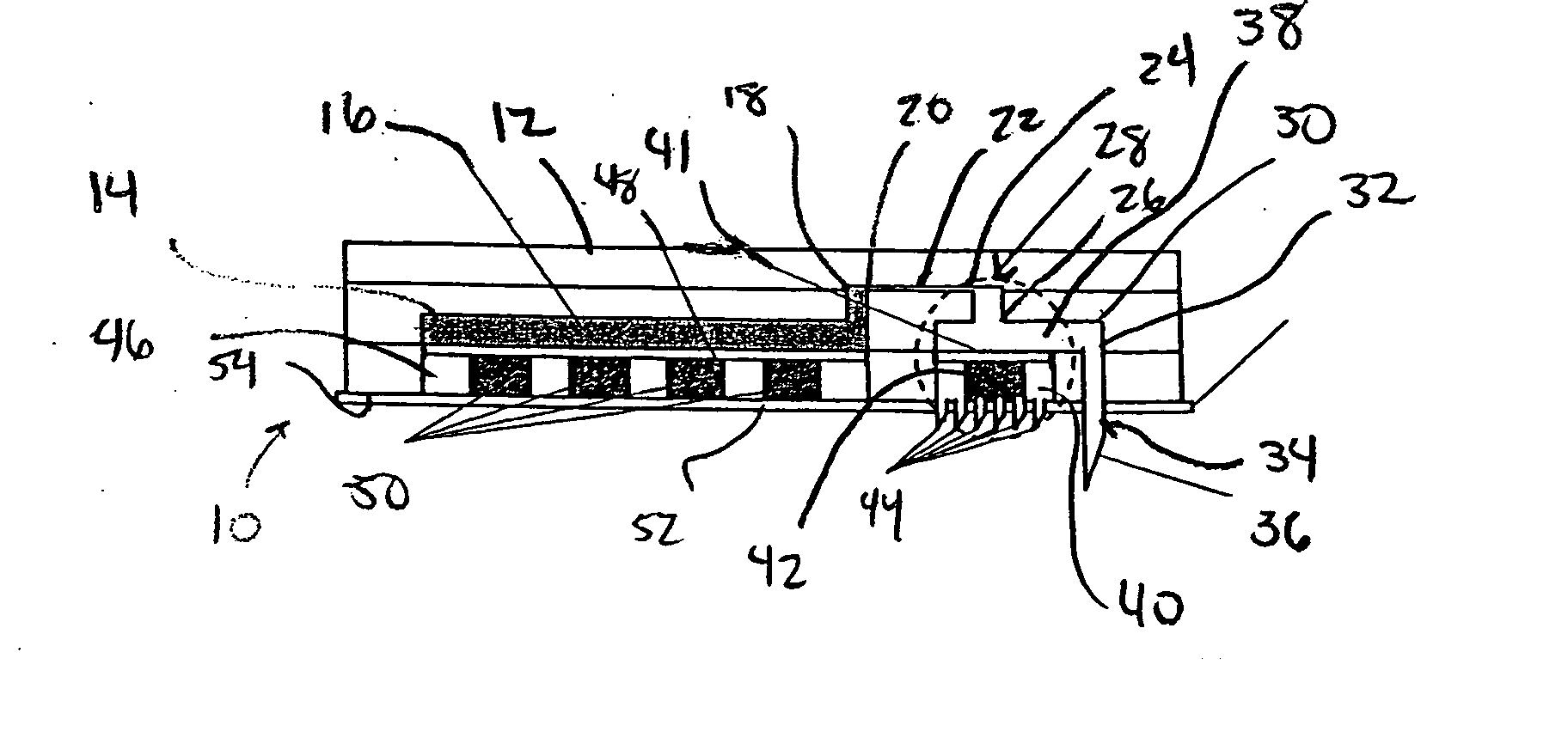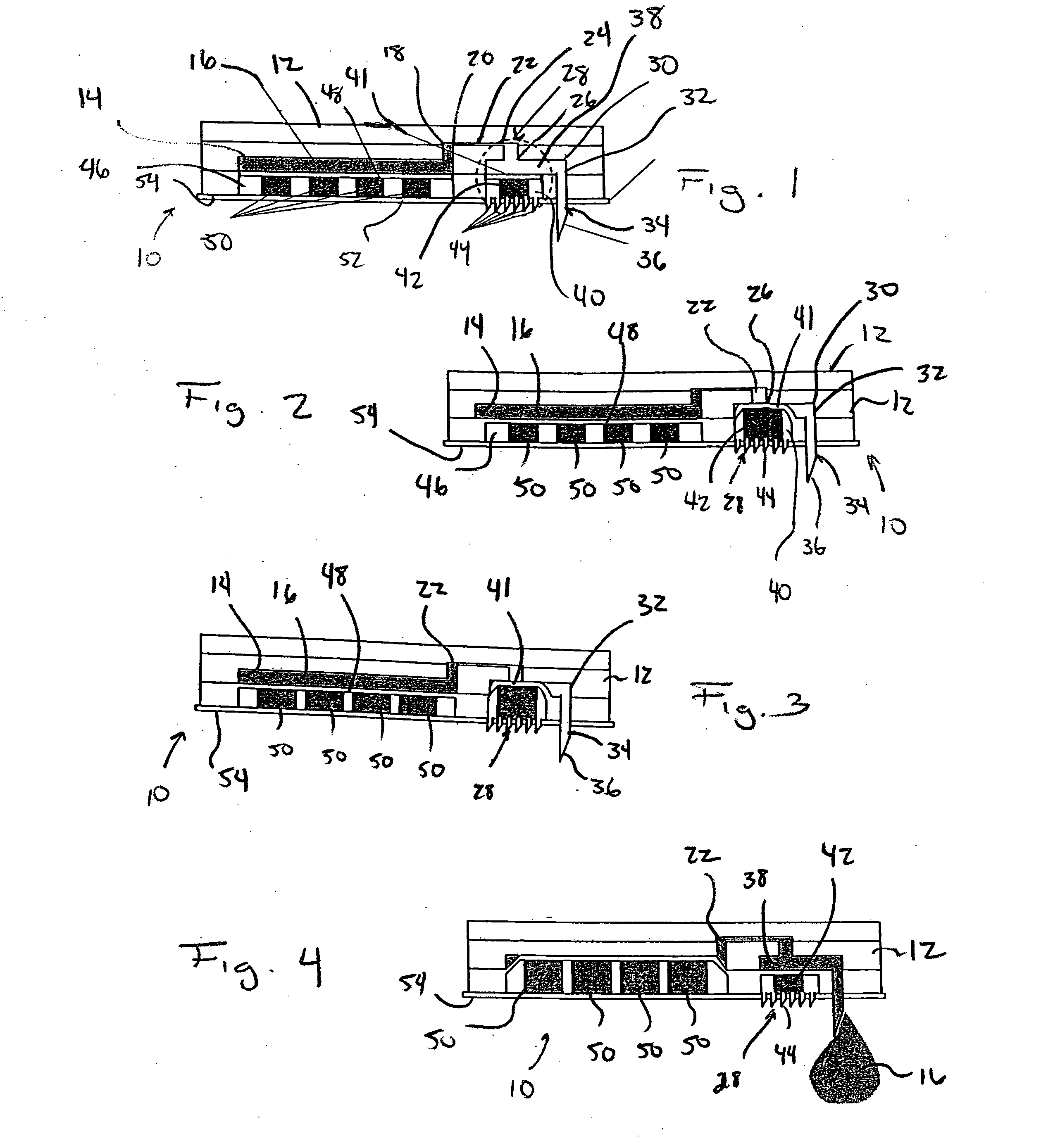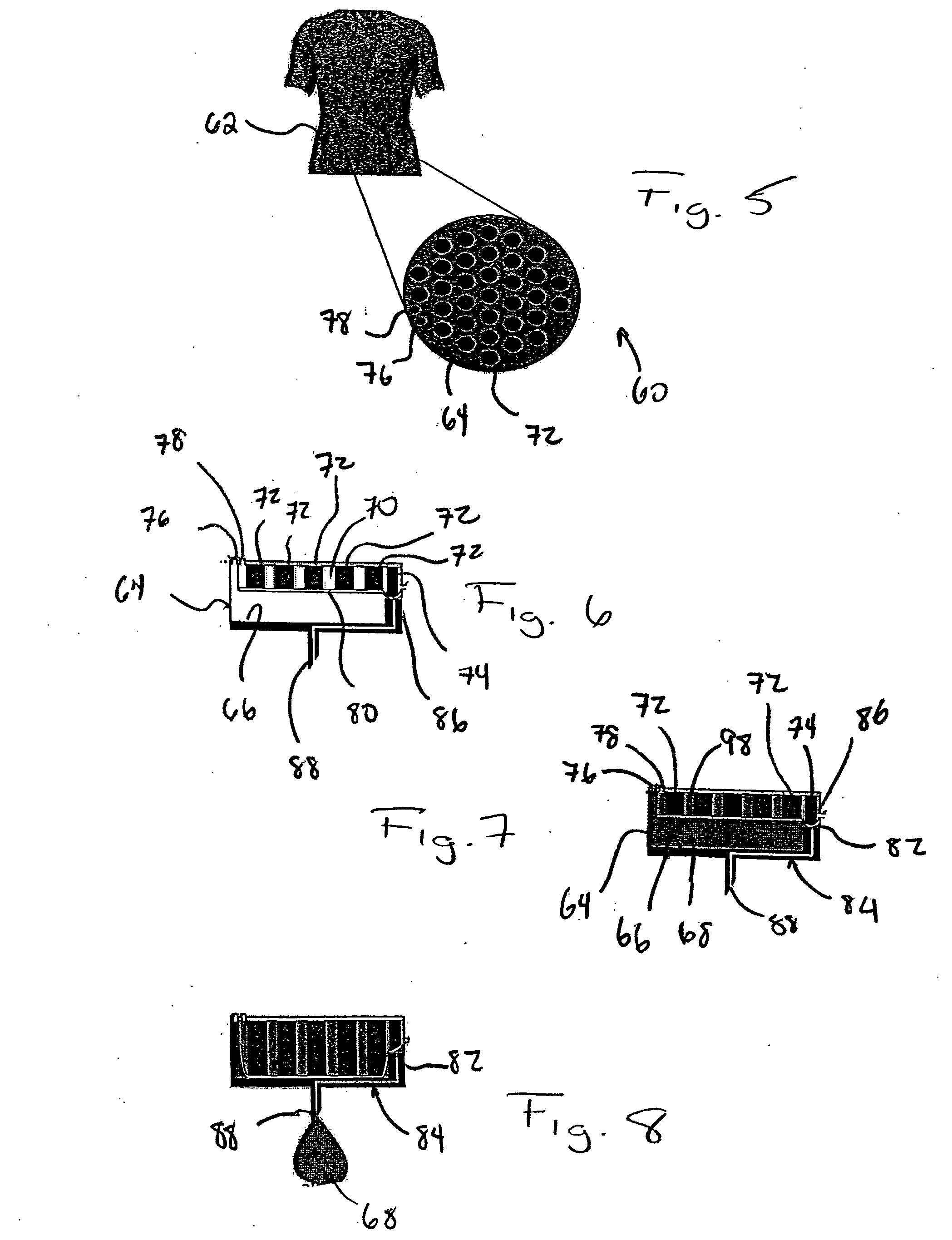Microfluidic device for drug delivery
- Summary
- Abstract
- Description
- Claims
- Application Information
AI Technical Summary
Benefits of technology
Problems solved by technology
Method used
Image
Examples
Embodiment Construction
[0036] Referring to FIGS. 1-4, a microfluidic device in accordance with the present invention is generally designated by the reference numeral 10. Microfluidic device 10 includes body 12 formed from polydimethylsiloxane (PDMS) or the like in any conventional manner such as by compression micromolding or rapid prototyping. Body 12 defines reservoir 14 for the receiving and the storage of drug 16 therein. Reservoir 14 includes output 18 that communicates with input 20 of flow conduit 22. Output 24 of flow conduit 22 communicates with the input 26 of valve 28. Output 30 of valve 28 communicates with input 32 of outlet needle 34 that projects from body 12. Outlet needle 34 includes outlet end 36 that is injectable into an individual, as hereinafter described.
[0037] Valve 28 includes a valve chamber defined by drug flow portion 38 and trigger receiving portion 40. Drug flow portion 38 and trigger receiving portion 40 of the valve chamber within valve 28 are isolated from each other by f...
PUM
 Login to View More
Login to View More Abstract
Description
Claims
Application Information
 Login to View More
Login to View More - R&D
- Intellectual Property
- Life Sciences
- Materials
- Tech Scout
- Unparalleled Data Quality
- Higher Quality Content
- 60% Fewer Hallucinations
Browse by: Latest US Patents, China's latest patents, Technical Efficacy Thesaurus, Application Domain, Technology Topic, Popular Technical Reports.
© 2025 PatSnap. All rights reserved.Legal|Privacy policy|Modern Slavery Act Transparency Statement|Sitemap|About US| Contact US: help@patsnap.com



